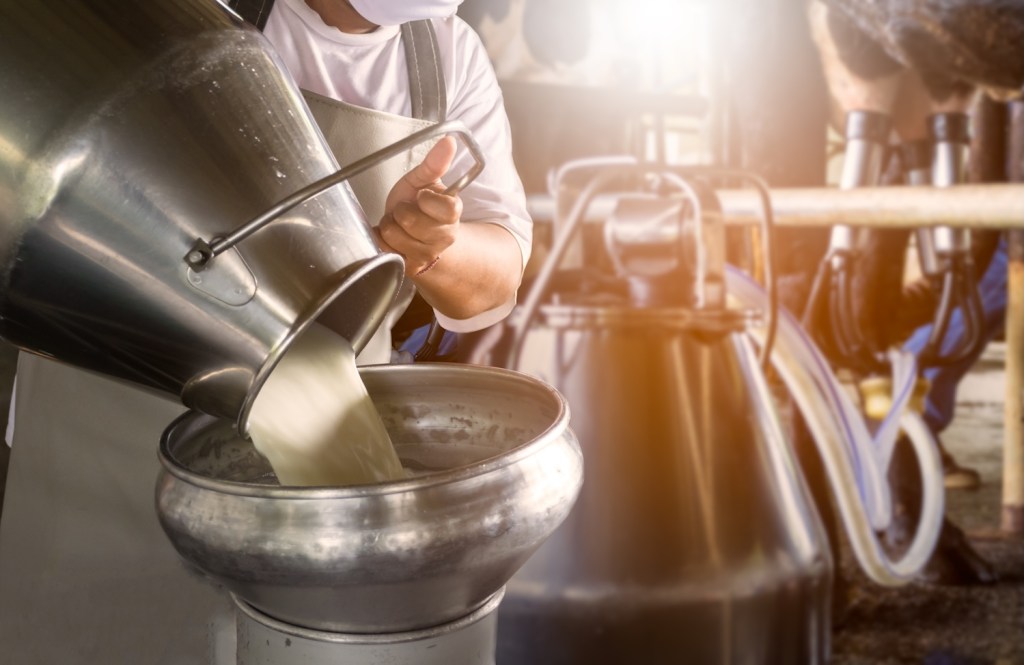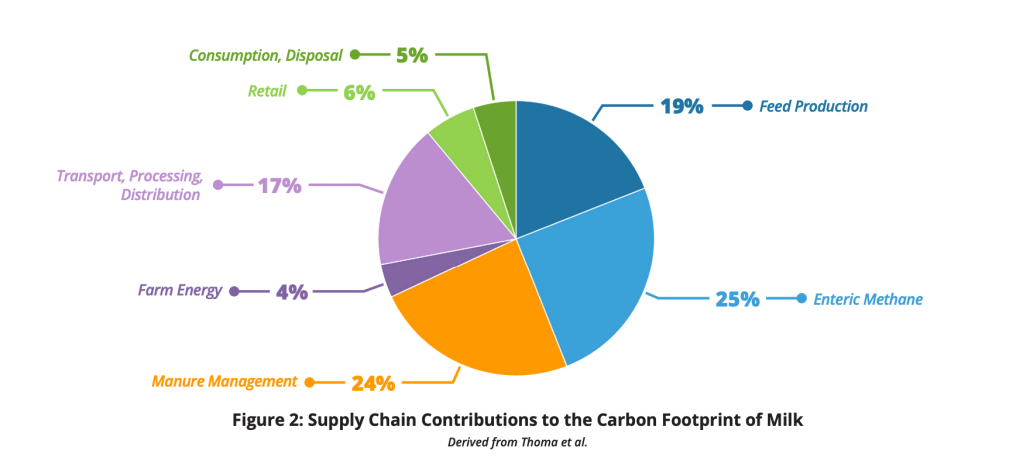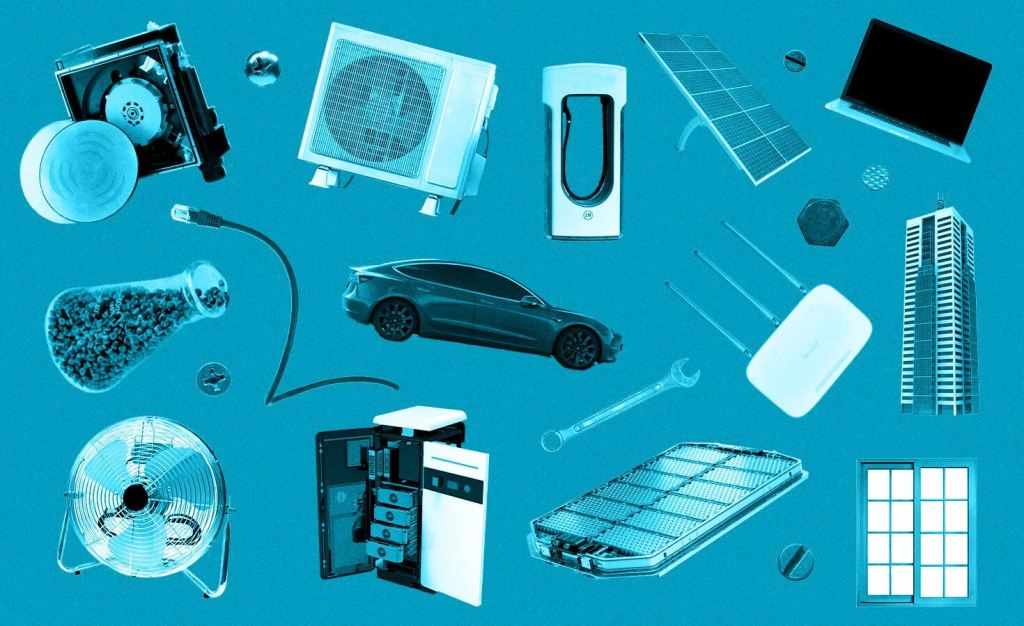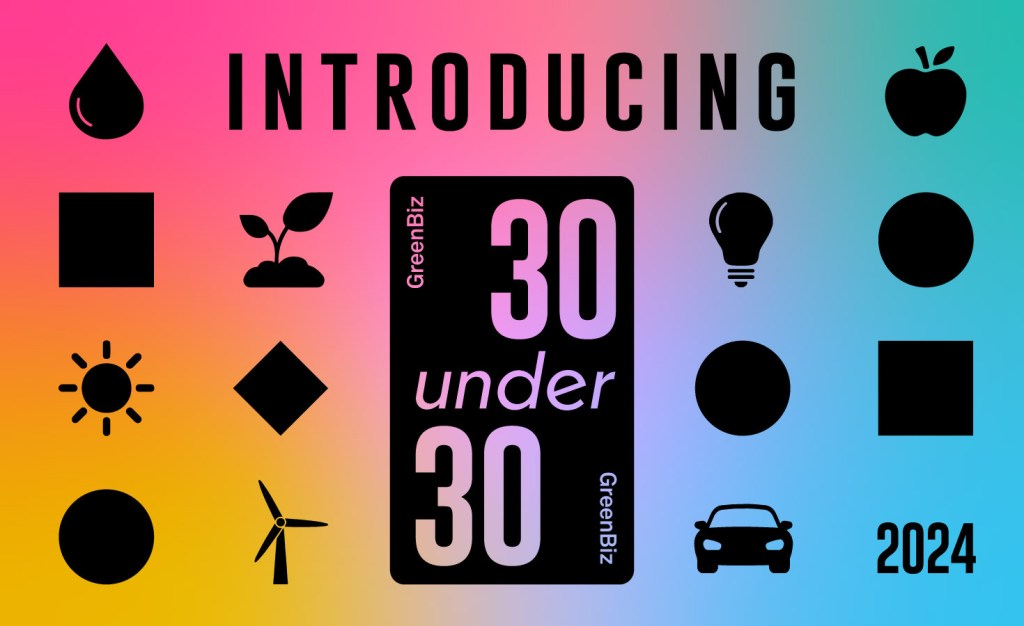Danone, Mars and Pizza Hut use these best practices to reduce dairy emissions that include cow burps
New approaches for feed production and managing cows’ diets are a crucial first step for reducing methane and nitrous oxide. Read More

The world’s largest food and restaurant companies including Danone, Mars and Pizza Hut plan to step up efforts to tame their dairy supply chain emissions in 2025.
Those initiatives will include more detailed disclosures about dairy-related methane — more than one-third of dairy’s on-farm footprint comes from enteric fermentation, a.k.a. cow burps — along with investments to help farmers improve soil health and reduce the impact of methane from cows.
Mars, for example, is devoting $47 million to new procurement policies over the next three years that will see the maker of brands including Dove ice cream and Snickers chocolate bars prioritize purchases from dairy cooperatives and farms that embrace new diets for cows and manure management strategies.
Farmers are “natural pioneers,” but they need economic incentives to make changes to reduce methane and other on-farm greenhouse gases, said Amanda Davies, chief research and development, procurement and sustainability officer for Mars Snacking. “It’s not going to be one solution; there isn’t going to be one magic,” she said.

This will take dedicated finance, over time. All three companies named in this article are considering incentives in the form of long-term sourcing agreements, help with capital expenditures for new processes or equipment, and better pricing for suppliers that can demonstrate reductions. “This reduces the risk of the transition for the farmer,” said Mollie Hoss-Kuhne, senior strategist for food and beverage at consulting firm Quantis in Germany.
Cooperate with cooperatives
Mars will focus its dairy investments on specific farms in Europe. One of its partners is FrieslandCampina, a cooperative in the Netherlands that will dedicate certain output to the food and snack company. Mars is also committing to a five-year pilot program with DMK Group in Germany to test new technologies at three “net zero” farms.
Pizza Hut, the world’s second biggest pizza restaurant chain, already buys 60 percent of the milk for its cheese in the U.S. through a farmer cooperative dedicated to cutting emissions by 30 percent by 2030. That change in sourcing helped Pizza Hut cut dairy emissions 10 percent between 2022 and 2023, and it is preparing to go deeper in 2025.
The refrain is similar for French yogurt-maker Danone, which has committed to cutting emissions from its fresh milk supply by 30 percent by 2030. The company works directly with 58,000 farmers, many of them small. Most of the company’s milk is sourced within 125 miles of its factories.
“Dairy is increasingly part of the agenda for companies,” said Shalini Unnikrishnan, global lead for societal impact, including food systems, with Boston Consulting Group. “When you look at Scope 3, if you have anything in meat, that will be the most prominent impact. Dairy will be a close second.”

Simplify a complex emissions accounting scenario
Emissions estimates for the dairy industry are opaque, because they’re often lumped together with calculations for other livestock, but they’re around 4 percent of anthropogenic emissions, according to an oft-cited, aged United Nations report.
What’s more clear is that methane emissions are the biggest component of farm-related dairy emissions, accounting for more than half the sector’s impact in some regions, followed by nitrous oxide and carbon dioxide. The Dairy Methane Action Alliance, founded by six companies including Danone, General Mills and Kraft Heinz, has committed to disclosures starting in 2025. They’re using an Environmental Defense Fund guide published in November that aims to help food companies more accurately account for and disclose their dairy emissions. The alliance now has eight members, and another wave of companies will started disclosing data in 2025, said Vrashabh Kapate, senior manager for the global sector with EDF.
Much of that information will come from farmers, so Danone, Mars and Pizza Hut are requiring their closest suppliers to collect on-farm data. Pizza Hut, for example, encourages dairy farmers to use the Farm Environmental Stewardship program to track herd size, feed rations and energy use, among other metrics. The company sponsored the administrative support to help farmers make that commitment, Bazih said.
What early measurements have revealed:
- Dairy is the second largest contributor to the Mars Snacking footprint. The company declined to reveal the percentage, but raw ingredients including milk, butter and cheese account for 70 percent of Mars’ total emissions.
- Methane emissions represent 25 percent of Danone’s full scope emissions, and fresh milk represents 70 percent of the company’s methane total.
- Dairy accounted for 13 percent of emissions for total Scope 3 purchased goods and services in 2023 for Yum! Brands, Pizza Hut’s parent company; Pizza Hut’s dairy exposure isn’t specifically disclosed, but it’s half of all emissions from purchased goods, according to the company’s manager for global nutrition and wellness innovation, Lauren Bazih.
Control cows’ diets more closely
All three companies have put new approaches to feed protection and controlling cows’ diets at the center of their dairy emissions reduction strategies.
- Pizza Hut provides farms participating in its reduction program with a special cup to manage the proportions of dry feed in cows’ diets.
“Feed is really important not only because if you look at the footprint, growing the feed is a 20 percent part of that footprint,” said Boston Consulting’s Unnikrishnan.
Both Danone and Mars are testing feed additives, although concerns have been raised about the potential impact of these supplements.
- In September, Danone announced a strategic partnership with Japanese company Ajinomoto. Its feed additive delivers lysine to a cow’s digestive system, cutting nitrous oxide emissions from manure by 25 percent, according to the companies. It also decreases the amount of soybeans cows need to eat, helping address agricultural emissions.
- Mars is working with one of its biggest dairy producers, New Zealand dairy cooperative Fonterra, to study whether a seaweed supplement from Sea Forest that could potentially reduce methane. It’s supporting a project in Poland, one of the largest projects using Bovaer, a supplement from DSM.
“If you look at feed not from a problem lens but from a solution lens, the ability to grow feed and then put the right additives into the mix can represent two-thirds of the answer,” said Boston Consulting’s Unnikrishnan.
Take a new approach to manure management
Both Danone and Mars are advocating the use of new approaches to storing manure, which can reduce methane emissions. “You see a lot of the largest companies have pilots or pilot farms or projects in place where these technologies are being investigated and looked at,” said Quantis’ Hoss-Kuhne.
Mars, for example, is testing:
- Manure lagoon covers and equipment for separating liquids and solids, which the Land O’Lakes dairy cooperative is deploying in the U.S.
- Additives that reduce storage emissions and bio-digesters for converting manure into energy, used by members of the FrieslandCampina cooperative.
“This is relatively known technology, and it’s not as prevalent as it really should be,” said Unnikrishnan.
[Elevate your organization’s decarbonization strategy with the knowledge and connections you need at GreenBiz 25, February 10-12, Phoenix, Arizona.]














